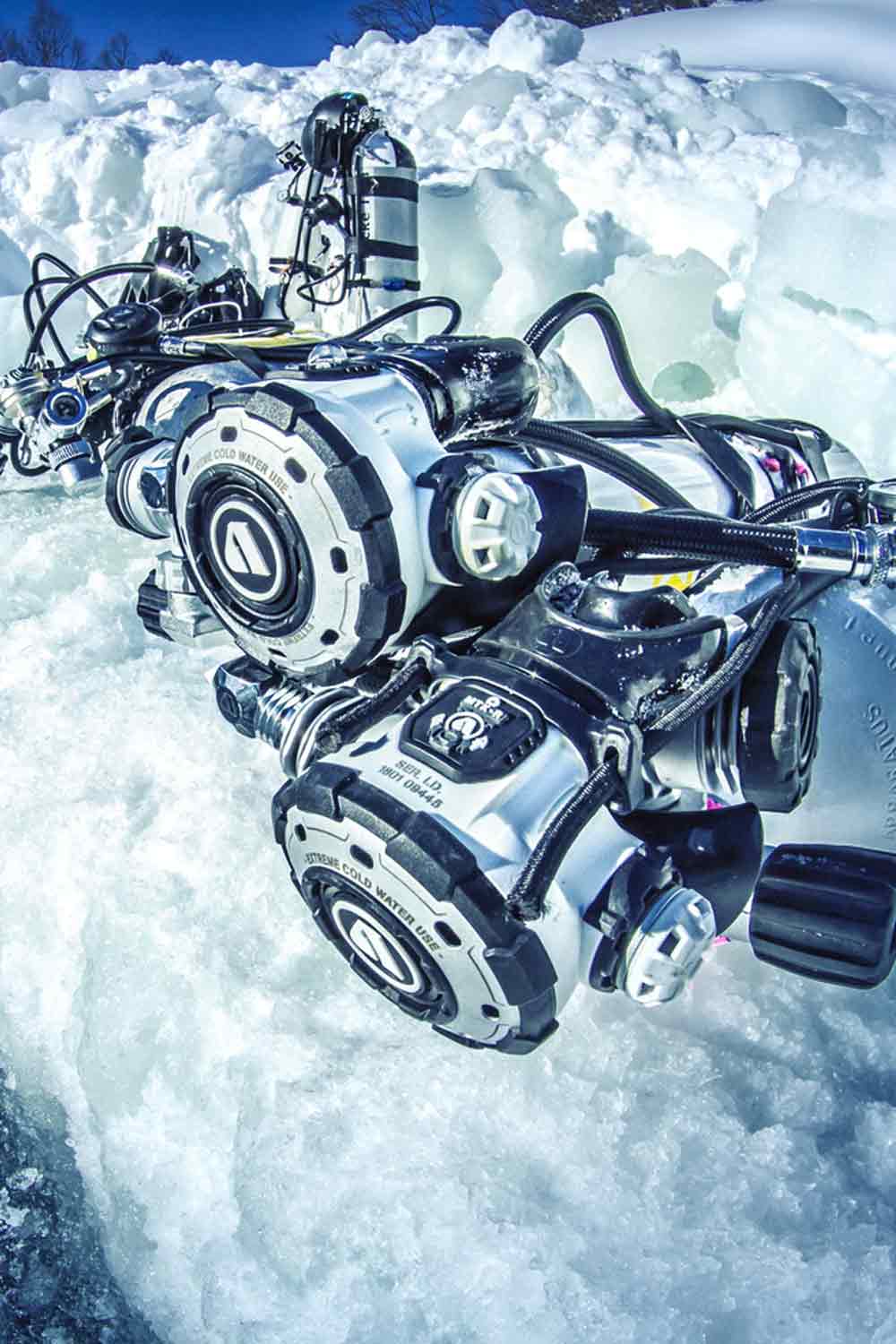Diving Knowledge
Our Oceans Facts
The oceans contain 99 per cent of the living space on Earth, covering over 71 per cent of its surface. In all, the oceans contain 328 million cubic miles/1.34 billion cu. Km of water.
Ninety-seven per cent of the water on Earth is seawater. Less than 1 per cent is fresh, while another 2 to 3 per cent is contained in glaciers and icecaps.
The surface area of the Pacific Ocean alone exceeds the surface area of all landmasses combined.
The record for the longest coastline goes to Canada, with 56,453 miles/ 90,906 km. That’s around 15 per cent of the world’s total 372,384 miles/599,652 km of coastline.
Seawater contains almost every element on Earth. In fact, if all the salt were extracted, it could cover the continents to a depth of 5 feet/1.5 m. And if all the gold could be extracted, every man, woman, and child on Earth would have about nine pounds/4 kg.
While the average land elevation is 2,755 feet/840 m, the average depth of the ocean is 12,238 feet/3,730 m. The deepest part is the Marianas Trench in an area called Challenger Deep, where it’s 35,802 feet/10,912 m to the bottom, a depth that could completely submerge Mount Everest by more than 8,000 feet/2,438 m. The pressure at the bottom is an astounding 8 tons per square inch. That’s like one person trying to support 50 jumbo jets.
Speaking of Mount Everest, if you thought it was the tallest mountain on Earth, think again. Although Mount Everest is 29,028 feet/8,847 m, when measured from the seafloor, Hawaii’s Mauna Kea is 33,465 feet/10,200 m. (Only 13,796 feet/4,205 m stands above sea level, however.)
On the subject of mountains, the Earth’s longest-range is — where else? — underwater. It’s called the Mid-Ocean Ridge and winds its way from the Arctic Ocean through the Atlantic, skirting Africa, Asia, and Australia, and crosses the Pacific to the west coast of North America. That’s four times longer than the Andes, Rockies, and Himalayas combined.
While land-based volcanic eruptions garner most of the publicity, more than 90 per cent of all volcanic activity occurs in the oceans. Scientists have, in fact, located the largest known concentration of volcanoes along the seafloor of the South Pacific in an area roughly the size of New York state. The area contains over 1,100 volcanic cones and seamounts, two or three of which could erupt at any time.
The Atlantic Ocean is still growing at a rate of 1.5 inches/4 cm per year. That means it was about 66 feet/20 m narrower when Columbus landed.
If you think it’s cold where you dive, consider that the average seawater temperature is a bone-chilling 38?F/3.5?C. However, sea surface temperatures in the Persian Gulf can reach over 96?F/36?C.
Most of us think of ocean currents as relatively permanent features flowing in only one direction, but there is a notable exception. In the Indian Ocean, currents are seasonal, driven by the monsoon winds. From November to March the current is driven toward Africa, only to reverse direction in May with the changing wind pattern.
The term “Arctic” is derived from the Greek arktos, meaning bear. It was named for the polar bear, Ursus maritimas (sea bear). These creatures are so adapted to life on the ice packs that some never set foot on land.
The largest tidal wave (tsunami) ever recorded was 210 feet/64 m high. It struck Siberia’s Kamchatka Peninsula in 1737.
Life began in the seas sometime between 3.1 and 3.4 billion years ago. But it didn’t move to land until about 400 million years ago, proving that our connection to the sea is far older than to land. Two-thirds of the phyla, the major groupings of life on Earth, are exclusively or predominantly found in the ocean.
The base of the marine food chain is the tiny, free-floating organism called phytoplankton, on which almost all other life in the sea is dependent. In fact, as they produce about 50 per cent of our oxygen supply, all life on Earth depends on these diminutive wanderers. They are so prolific that each year 200 million tons of phytoplankton grow in the world’s oceans. For comparison, that’s ten times the weight of the entire human population of our planet.
The blue whale, Balaenoptera musculus, is the largest known animal ever to have lived on sea or land. Bigger than even the biggest dinosaur, it can reach more than 110 feet/33 m in length and weigh more than 50 adult elephants. With a heart, the size of a Volkswagen Beetle, the whale’s blood vessels are so large that a full-grown trout could swim through them. To sustain its bulk, the blue whale must consume up to 4 tons of krill per day.
Speaking of big, while most divers know that the largest fish in the sea is the whale shark, less well-known is the largest bony fish. (Shark are cartilaginous, remember.) The winner is the rarely seen ocean sunfish, Mola mola, which can grow to over ten feet/3 m and tip the scales at over 2 tons.
On the opposite end of the size chart is the dwarf goby, Eviota sp., of the Indian Ocean. As a full-grown adult, it reaches a mere .35 inches/9 mm. The record for the smallest shark is the spined pygmy, Squaliolus laticaudus, which measures a whopping six inches/15 cm.
If you think finding a date is tough, consider the plight of some deep-sea fishes like the anglerfish, Photocorymus hippurus. The male, tiny in comparison to the female, attaches itself by biting his companion. Then the two merge into one, with the male becoming nothing more than a small, permanent appendage that fertilises eggs.
Many divers are all too familiar with the highly potent sting of the jellyfish — actually a siphonophore — called the Portuguese man-of-war, Physalia physalis. The bluish saclike creature can extend its powerful tentacles to depths of almost 100 feet/30 m. What you may not know is that this critter isn’t a single organism at all. It’s actually a colony of as many as 100,000 tiny individuals, each doing its own specialised job.
Few folks realise that a huge mat of sargassum — a type of marine algae — the size of India floats permanently in the middle of the North Atlantic. It’s held there solely by the circulation pattern of oceanic currents, most notably the Gulf Stream. Aptly, it’s known as the Sargasso Sea.
It wasn’t until 1977 that scientists discovered an entirely new basis for life on Earth — chemosynthesis. Hydrothermal vents which occur at fractures along deep-sea oceanic plates spew sulfur compounds, which support the only complex ecosystem known to run on chemicals rather than energy from the sun. It is now hypothesised by some that this is where life on Earth began.
Stories of sea serpents may be true after all — except that they’re not monsters, but rare fish. Such stories probably originated from sightings of the oarfish, Regalecus glesne, which at 50 feet/15 m long is the longest bony fish in the world.
The structure and chemistry of coral is so close to the human bone that coral is now sometimes used to repair or replace bone in humans.
There’s a good reason Atlantic horseshoe crabs, Limulus polyphemus, look like their products of the special-effects department of Jurassic Park. They have remained virtually unchanged for the past 135 million years. More importantly to humans, their blood is used to test for the toxins that cause septic shock, a condition which at one time accounted for half of all hospital-acquired infections and one-fifth of all hospital deaths.
Global fish production yields more than cattle, sheep, poultry or eggs and is the most significant source of protein in the world. Yet in a fantastic example of Alice-in-Wonderland economics, the worldwide fishing industry spends $124 billion per year to catch only $70 billion worth of fish. This difference is made up by government subsidies.
Fully one-third of the total worldwide catch (27 million metric tons) of commercial marine fisheries is discarded as “by-catch,” most of which dies. This includes not only nontargeted fish but seabirds, sea turtles and marine mammals as well. The shrimp industry is even worse. Shrimp trawlers discard 80 to 90 per cent of their hauls, so for every pound of shrimp you eat, more than four pounds/1.8 kg of fish are wastefully tossed overboard to die.
Weighing 1,500 pounds/679 kg and capable of swimming up to 55 miles/89 km per hour, Bluefin tuna, Thunnus thynnus, are among the largest and fastest fishes. Unfortunately, they’re also in high demand at Japan’s sushi bars. One fish can sell for over $25,000, placing an incredible and unsustainable demand on the stock.
Ask most people what’s the No. 1 pollution problem facing the ocean, and you’re likely to hear about oil spills. The fact is that of the 5 million tons of oil that enters the oceans each year, spills from tankers and oil platforms account for only about 5 per cent of the total. Twice that amount comes from sewage treatment plants like the one down the street from you. Think of that the next time you change your car’s oil and are tempted to pour the waste down the drain.
As a testament to the interrelatedness of the atmosphere and ocean, fully one-third of toxic contaminants and excess nutrients entering the ocean comes from atmospheric deposition from rain and snow.
Serving as the drainage basin for almost 40 per cent of the continental United States, the Mississippi River carries so many excess nutrients into the Gulf of Mexico that oxygen loss from algal blooms has decimated all life within 4,000 square miles/10,363 sq. Km of the bottom area off the coast of Louisiana and Texas. Scientists refer to this as the Gulf of Mexico’s “Dead Zone.”
One of the most serious threats to marine ecosystems today comes from Hitchhikers. Various organisms, such as the zebra mussel, Dreissena polymorpha, have been transported worldwide in the ballast water of ships. These organisms often disrupt entire marine ecosystems. Not limited to bivalves, exotic stowaways include fishes, plants, poisonous algae and even diseases such as cholera.
If it seems crowded when you go to the beach, consider that one-half of the world’s people live within 60 miles/97 km of the sea coast. And it’s going to get worse. Within 30 years, a billion more people than are alive today (6.5 billion) will be living along the coasts.
In case you think global warming isn’t a serious problem, consider this: An increase of 7?F/4?C in the average global atmospheric temperature would melt enough of the polar icecap to increase the sea level some 230 feet/70 m. Virtually every coastal city in existence would be history.
Recently, I read a quote by Arthur C. Clarke, a longtime ocean advocate and author of the classic novel 2001: A Space Odyssey, which succinctly puts the issue of the world’s oceans into perspective. “It seems odd,” he writes, “that we call our home planet Earth when it is clearly Ocean.” How true.
Most of the facts in this article came from two outstanding Web sources. For more information about the oceans and the problems facing them, check out the Web site for the Smithsonian Institution’s Ocean Planet exhibition, www.seawifs.gsfc.nasa.gov/ocean_planet.html and Sea web www.seaweb.org











